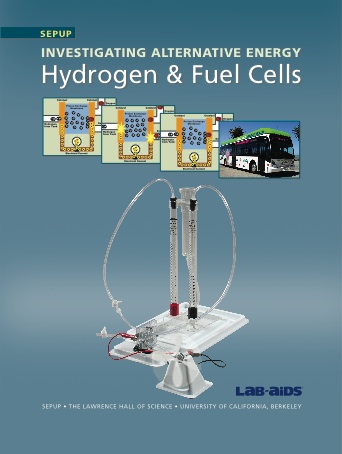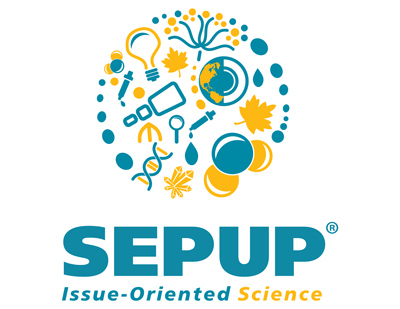Investigating Alternative Energy: Hydrogen & Fuel Cells

The Hydrogen Technology and Energy Curriculum (HyTEC) project has developed and field-tested a module titled “Investigating Alternative Energy: Hydrogen & Fuel Cells.” This module was developed by SEPUP of The Lawrence Hall of Science, UC Berkeley, in collaboration with the Schatz Energy Research Center at Humboldt State University, and is published by Lab-Aids. We would like to thank the U.S. Department of Energy and the Alameda-Contra Costa Transit District for their support of this project.
View Summary
View Funding and Support
Summary
The curriculum is based on SEPUP’s issue-oriented and inquiry-based approaches to science teaching and learning. In a sequence of six classroom activities, students are introduced to hydrogen and fuel cells in the context of energy for transportation. This sequence addresses National Science Education Standards and state science standards related to topics such as energy transformations, energy efficiency, chemical reactions, oxidation-reduction, stoichiometry, and societal perspectives on energy issues.
1. Hydrogen for Transportation?
A PowerPoint presentation and a short video introduce this module’s focus on the development of hydrogen and fuel cell technology as one potential solution to energy concerns. Students analyze tabulated data to investigate several potential options for powering vehicles. Students are introduced to various fuels and consider some of the trade-offs of using them.
2. Obtaining Hydrogen through Electrolysis
Students decompose water into hydrogen and oxygen. They solve problems related to the stoichiometry of the reaction.
3. Observing a Fuel Cell
Students use electricity generated by the fuel cell to run an electrical motor that turns a propeller. They measure the fuel cell’s voltage, observe the consumption of gases by the fuel cell, and measure the electrical current produced by the fuel cell.
4. Modeling the Fuel Cell Reaction
In order to understand the chemistry of fuel cells, students are introduced to oxidation-reduction (redox) reactions and half-reactions as a means of creating electric current. They then work with a computer simulation of a proton exchange membrane (PEM) fuel cell to investigate the chemical reactions that occur with a fuel cell. To deepen their understanding, they also manipulate models of oxygen and hydrogen molecules on a schematic diagram of a PEM fuel cell.
5. Fuel Cell Efficiency
Students measure the efficiency of a fuel cell. To do this, they measure the amount of gases consumed by the fuel cell and the electrical energy consumed by the propeller fan. Then, they use the change in the amount of hydrogen of the reaction to compute the efficiency of the fuel cell in converting the energy in hydrogen to electricity.
In addition, teachers can demonstrate a second method of measuring efficiency: lifting a 0.1 kilogram weight 1 meter with a fuel-cell powered electric motor and comparing that to the hydrogen consumed and the associated change in the amount of hydrogen of the reaction.
6. Hydrogen for Buses?
Students analyze information about hydrogen and fuel cells. They use fact sheets and do additional research to identify the advantages of and the challenges facing fuel cell powered buses. In a simulated City Council Meeting, students consider the various issues relating to hydrogen fuel and fuel cells, and discuss the trade-offs involved in their use.
Funding and Support
We would like to thank the United States Department of Energy (DOE) and the Alameda-Contra Costa Transit District (AC Transit) for their generous support of this project.
This project is funded through the U.S. Department of Energy’s Office of Energy Efficiency and Renewable Energy. Education projects were funded through a competitive application process.
AC Transit has provided funding, in-kind support, and expertise to this project.
Questions? Contact us at sepup@berkeley.edu



